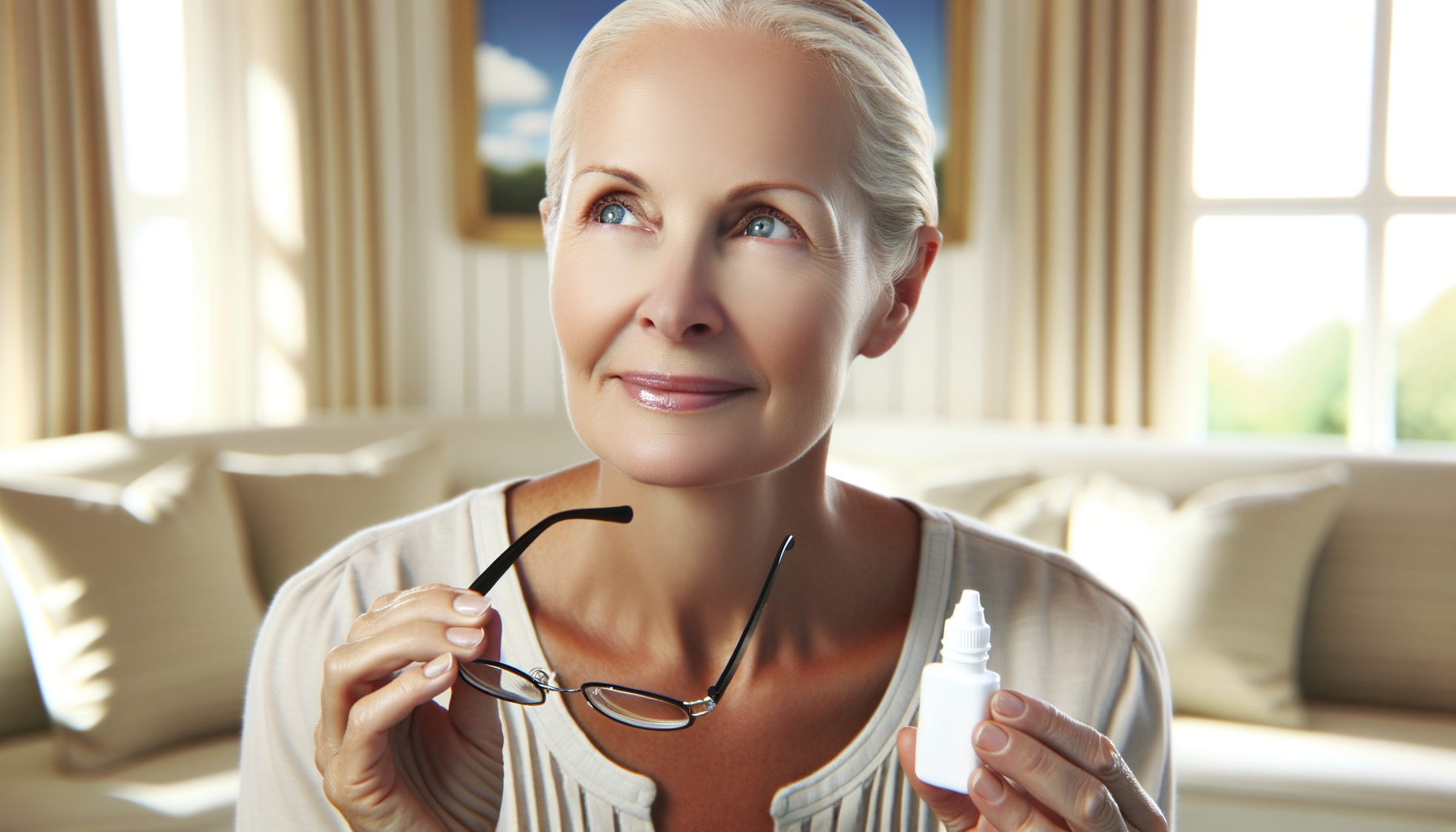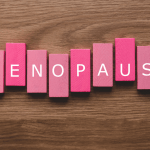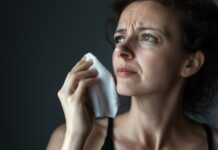Menopause marks a significant transition in a person’s life, characterized by the cessation of menstruation and a decline in reproductive hormones, particularly estrogen and progesterone. This natural biological process typically occurs in individuals in their 40s or 50s and brings about a host of physiological changes. The hormonal upheaval can trigger a variety of symptoms, ranging from hot flashes to mood swings. Each individual’s experience of menopause is unique, influenced by factors such as health status, medical history, and lifestyle.
Overview of Dry Eye Syndrome as a Menopausal Symptom
One of the lesser-known yet discomforting symptoms associated with menopause is Dry Eye Syndrome (DES). DES occurs when the eyes do not produce sufficient tears or when the tear film is not functioning properly, leading to symptoms like irritation, a gritty sensation, and blurred vision. As individuals age, tear production naturally decreases, but this condition is particularly prevalent among postmenopausal women. Research suggests that sex hormones, including androgens and estrogen, play a role in tear production, although the exact mechanisms remain under investigation. The multifactorial nature of DES means that it can stem from a combination of decreased tear production, rapid tear evaporation, and ineffective tears.
Impact of Dry Eye on Quality of Life
The discomforts of Dry Eye Syndrome can significantly affect one’s quality of life. Symptoms such as persistent dryness, burning, and itchy eyes can lead to distractions and reduced productivity, especially in activities that require sustained visual attention like reading or using a computer. Moreover, chronic DES can lead to more serious complications, including eye infections and corneal damage, if left untreated. The impact on daily life can be profound, making it essential for those experiencing menopausal changes to be aware of the symptoms and seek appropriate treatment.
Understanding the interplay between menopause and DES is crucial for managing symptoms effectively. As we delve deeper into the factors influencing the menopause experience, physiological changes, and treatment options, we aim to provide comprehensive insights to help individuals navigate this challenging phase with greater ease and comfort.

Factors Influencing Menopause Experience
Health and Medical History
The journey through menopause is highly individualized, with some experiencing minimal symptoms while others face significant challenges. A key factor influencing this experience is one’s health and medical history. Conditions such as obesity or a history of certain illnesses can exacerbate menopausal symptoms. For instance, metabolic changes and cardiovascular alterations during menopause can be more pronounced in individuals with pre-existing health issues. Similarly, those with a history of central nervous system disorders may find that menopause aggravates their condition. It is crucial for individuals to be aware of their health history and discuss potential risks and symptom management strategies with their healthcare provider.
Socioeconomic and Ethnic Considerations
Menopause does not occur in a vacuum; it is influenced by socioeconomic and ethnic factors. Access to healthcare, education, and support can vary widely based on socioeconomic status, potentially affecting the management and treatment of menopausal symptoms. Ethnic background also plays a role, as certain populations may experience menopause differently due to genetic, cultural, or lifestyle factors. Understanding these disparities is essential for healthcare providers to offer tailored advice and support, ensuring that all individuals can navigate menopause with the best possible care.
Geographical Influences on Menopause Symptoms
The impact of geographical location on menopause symptoms is an area of growing interest. Climate and environmental factors can influence the severity and type of symptoms experienced. For example, those living in drier climates may suffer more from dry eye syndrome, a common menopausal symptom. Additionally, cultural attitudes towards menopause can vary by region, affecting how symptoms are perceived and treated. Recognizing these geographical influences allows for a more nuanced approach to menopause management, taking into account the environment in which an individual lives.
Physiological Changes During Menopause
Metabolic and Cardiovascular Alterations
As women transition through menopause, significant metabolic changes occur, often leading to weight gain and altered fat distribution. This shift can increase the risk of developing metabolic syndrome, characterized by a cluster of conditions including increased blood pressure, high blood sugar, excess body fat around the waist, and abnormal cholesterol levels. These changes are largely due to the decline in estrogen levels, which is known to have a protective effect on the heart and metabolism.
Consequently, menopause is also associated with cardiovascular alterations. The reduction in estrogen may contribute to the stiffening of the arteries and changes in the lipid profile, such as increased LDL (bad cholesterol) and decreased HDL (good cholesterol). These factors elevate the risk of developing cardiovascular diseases, including heart attacks and strokes. Therefore, it is crucial for menopausal women to monitor their cardiovascular health closely and maintain a heart-healthy lifestyle.
Musculoskeletal and Central Nervous System Changes
The decline in estrogen during menopause also affects the musculoskeletal system. Bone density tends to decrease, leading to an increased risk of osteoporosis and fractures. Muscle mass and strength may also decline, which can impact balance and overall physical stability. To combat these changes, weight-bearing exercises, adequate calcium and vitamin D intake, and, in some cases, medication can be beneficial.
Changes in the central nervous system (CNS) are evident as well, with many women reporting mood swings, memory lapses, and difficulties in concentration. These symptoms may be linked to hormonal fluctuations and can be exacerbated by sleep disturbances, a common complaint during menopause. It is important to address these CNS changes by seeking support from healthcare providers, considering therapies such as cognitive-behavioral therapy, and ensuring good sleep hygiene.
Urogenital and Sexual Health Concerns
Menopause can lead to various urogenital changes, including vaginal dryness, irritation, and atrophy due to decreased estrogen levels. These changes can result in discomfort during intercourse, increased urinary urgency, and a higher risk of urinary tract infections. To alleviate these symptoms, options such as vaginal moisturizers, lubricants, and, in some cases, local estrogen therapy may be recommended.
Sexual health concerns are also prevalent, with changes in libido and sexual function often reported. These can stem from both physiological and psychological factors, including altered self-image due to other menopausal symptoms. Open communication with partners and healthcare providers, along with exploring different aspects of intimacy, can help address these concerns.
In summary, menopause brings about a range of physiological changes that can impact a woman’s metabolic, cardiovascular, musculoskeletal, CNS, urogenital, and sexual health. Awareness and proactive management of these changes are key to maintaining quality of life during this transition.
Symptoms and Diagnosis of Dry Eye in Menopause
Identifying Symptoms of Dry Eye
During menopause, many women may experience dry eye syndrome, a condition characterized by a disruption in the quality or quantity of tears produced. Common symptoms include:
- Itchiness: An irritating sensation that leads to the urge to rub the eyes.
- Soreness: A feeling of discomfort or pain in the eyes.
- Grittiness: A sensation of having sand or grit in the eyes.
- Redness: Eyes may appear bloodshot or inflamed.
- Blurry Vision: Temporary loss of sharpness in vision, often improving with blinking.
- Light Sensitivity: Discomfort or pain in bright lights.
- Watery Eyes: Excessive tearing, which is the body’s response to the irritation of dry eyes.
These symptoms can lead to a significant impact on daily activities and overall quality of life.
Diagnostic Techniques for Dry Eye
To diagnose dry eye syndrome, healthcare providers may employ several methods:
- Schirmer’s Test: Measures tear production by placing a thin strip of filter paper under the lower eyelid.
- Slit-Lamp Examination: Allows the doctor to observe the surface of the eye under magnification and illumination to detect any abnormalities.
- Tear Breakup Time: Assesses the stability of the tear film by measuring the time it takes for tears to begin to break up after a blink.
- Osmolarity Testing: Evaluates the concentration of solutes in the tears, which can be higher in those with dry eye syndrome.
These tests help to confirm the diagnosis and guide the appropriate treatment plan.
Potential Complications of Untreated Dry Eye
Without treatment, dry eye can lead to more serious complications, including:
- Eye Infections: The lack of adequate tears can make the eyes more susceptible to infections.
- Corneal Abrasions: The dryness and irritation can lead to scratches on the surface of the eye.
- Corneal Ulcers: Severe dry eye can result in open sores on the cornea, which can lead to scarring and vision loss.
- Decreased Quality of Life: Persistent discomfort can interfere with daily tasks such as reading, driving, and computer work.
It is crucial for individuals experiencing symptoms of dry eye to seek medical advice to prevent these complications and maintain eye health.

Feeling You Have a Right to Safe Beauty & Fem Care?
If so, it may be time for a change. It starts with knowledge. We have a few suggestions in our new guides.
Treatment Options for Dry Eye During Menopause
Over-the-Counter Medications and Lubricants
For many women experiencing dry eyes during menopause, the first line of defense often includes over-the-counter (OTC) options. Lubricating eye drops, commonly referred to as artificial tears, are widely available and can provide temporary relief by supplementing the natural tear film. It’s important to choose preservative-free formulas if you’re using them frequently to avoid potential irritation. In addition to drops, lubricating ointments and gels can offer longer-lasting relief, particularly for nighttime use, though they may temporarily blur vision. For those who find drops and ointments insufficient, scleral contact lenses or autologous serum tears may be recommended to protect the cornea and mimic natural tears more closely.
Prescription Medications and Advanced Treatments
When OTC medications are not effective, prescription options may be considered. Anti-inflammatory medications such as immunomodulatory eye drops (e.g., cyclosporine) can help manage inflammation on the ocular surface. Corticosteroid eye drops are another option, though they are typically used for short-term relief due to potential side effects. For issues with oil production in the eyelids, oral antibiotics with anti-inflammatory properties can be prescribed. In some cases, doctors may recommend eye inserts that release lubricants slowly or drugs that stimulate tear production, available in pill, gel, or eye drop form.
Surgical Interventions for Severe Cases
Surgical options are reserved for severe cases of dry eye where other treatments have failed. Procedures may include punctal occlusion, where the ducts that drain tears from the eyes are blocked to retain moisture. In extreme cases, gland expression or intense pulsed light therapy (IPL) may be used to address dysfunction of the meibomian glands. It’s crucial to consult with an ophthalmologist to determine the appropriateness of these interventions.
Evaluating the Efficacy of Hormone Therapy
The relationship between hormone replacement therapy (HRT) and dry eye symptoms is complex and somewhat controversial. While some studies suggest that HRT can alleviate dry eye symptoms by addressing hormonal imbalances, others indicate that it may exacerbate the condition. The largest cross-sectional study to date found that long-term HRT could increase the risk and severity of dry eye symptoms. Therefore, the decision to use HRT as a treatment for dry eye should be made cautiously and in consultation with a healthcare provider, considering both the potential benefits and risks.
In conclusion, treatment for dry eye during menopause should be tailored to the individual’s symptoms and response to various therapies. A combination of lifestyle adjustments, OTC products, prescription medications, and possibly surgical interventions can be employed to manage this condition effectively. It is essential for patients to work closely with their healthcare providers to find the most suitable treatment plan.
Alternative Treatments and Lifestyle Adjustments
Home Remedies and Complementary Therapies
For those grappling with dry eye symptoms during menopause, there are several home remedies and complementary therapies that can offer relief. Applying warm compresses to the eyes can help stimulate oil production in the eyelids’ glands, improving tear quality. Gently washing the eyelids with baby shampoo and warm water can also help release trapped oils. Additionally, eyelid massages can promote oil flow and reduce symptoms. Some individuals find relief through acupuncture, which may help stimulate tear production and reduce inflammation.
Dietary Considerations and Nutritional Support
A balanced diet plays a crucial role in managing dry eye symptoms. Foods rich in omega-3 fatty acids—such as salmon, sardines, flax seeds, and walnuts—can reduce inflammation and improve tear quality. Ensuring adequate intake of vitamins A, B12, and D is also important for eye health. A deficiency in vitamin D, in particular, has been linked to dry eye symptoms. It’s essential to consult with a healthcare provider before starting any supplements to ensure they’re appropriate for your individual health needs.
Environmental and Behavioral Modifications
Environmental factors can exacerbate dry eye symptoms, so making certain adjustments can be beneficial. Using a humidifier in the home can add moisture to the air, reducing tear evaporation. Protecting the eyes from wind and sun with wraparound sunglasses is also recommended, especially in dry climates. Reducing screen time and taking regular breaks to blink and rest the eyes can prevent strain and dryness. It’s also advisable to avoid smoke, including second-hand smoke, as it can irritate the eyes and worsen dry eye symptoms.
Behavioral changes such as drinking plenty of water—around 8-10 glasses a day—can help maintain overall hydration and support eye moisture. For contact lens wearers, switching to glasses or specially designed contacts can reduce irritation. Lastly, maintaining a clean environment, free from dust and allergens, can prevent additional eye irritation and discomfort.
By incorporating these alternative treatments and lifestyle adjustments, individuals experiencing dry eyes during menopause can find relief and improve their quality of life. It’s important to remember that while these strategies can be effective, they should complement, not replace, medical advice and treatments provided by healthcare professionals.
By the way, something for you, a little gift!!!
I am just in the middle of publishing my book. It’s about How women can balance their hormones. One part is about food and diet, of course.
Follow this link and enter your email.
I will send you this part of the book for free once the book is published. It has many concrete, practical tips and recipes and will help you feel better during menopause or times of Big hormonal fluctuations.
Annette, Damiva Lead for Health & Wellness

Prevention and Management of Menopause-Related Dry Eye
Strategies for Managing Menopause Symptoms
Menopause brings a host of changes, and managing its symptoms can be challenging. To mitigate these symptoms, including dry eyes, consider the following strategies:
- Regular Check-ups: Regular visits to your healthcare provider can help monitor hormonal levels and manage menopausal symptoms effectively.
- Healthy Diet: A balanced diet rich in omega-3 fatty acids and vitamin A can promote tear production and overall eye health.
- Stay Hydrated: Drinking plenty of water helps maintain moisture levels in the body, including the eyes.
- Exercise: Regular physical activity can improve overall well-being and help balance hormones.
- Stress Management: Techniques such as yoga, meditation, and deep breathing can reduce stress, which may exacerbate menopausal symptoms.
Preventive Measures for Dry Eye
Preventing dry eye syndrome involves a proactive approach to eye care:
- Environmental Control: Use a humidifier to add moisture to the air, and avoid direct exposure to wind, smoke, and air conditioning.
- Protective Eyewear: Sunglasses that wrap around the face can shield eyes from irritants and reduce tear evaporation.
- Screen Breaks: Follow the 20/20/20 rule when using digital devices to reduce eye strain and encourage blinking.
- Artificial Tears: Use preservative-free artificial tears to lubricate the eyes, especially if you experience symptoms frequently.
- Omega-3 Supplements: These may support tear production and reduce inflammation. Consult your healthcare provider before starting any supplements.
When to Seek Medical Advice
While preventive measures and lifestyle changes can help manage dry eye symptoms, it’s important to know when to seek professional advice:
- Persistent Discomfort: If symptoms such as irritation, redness, or blurred vision persist despite over-the-counter treatments, consult an eye care professional.
- Changes in Vision: Any significant changes in vision should prompt an immediate visit to an ophthalmologist.
- Severe Symptoms: Intense pain, light sensitivity, or the sensation of a foreign body in the eye warrants prompt medical attention.
- Before Starting Treatments: Always consult with a healthcare provider before beginning any new treatment, including hormone replacement therapy, which has been linked to varying effects on dry eye symptoms.
By understanding the connection between menopause and dry eye, taking preventive measures, and seeking medical advice when necessary, individuals can better manage their eye health during this transitional phase of life.



















